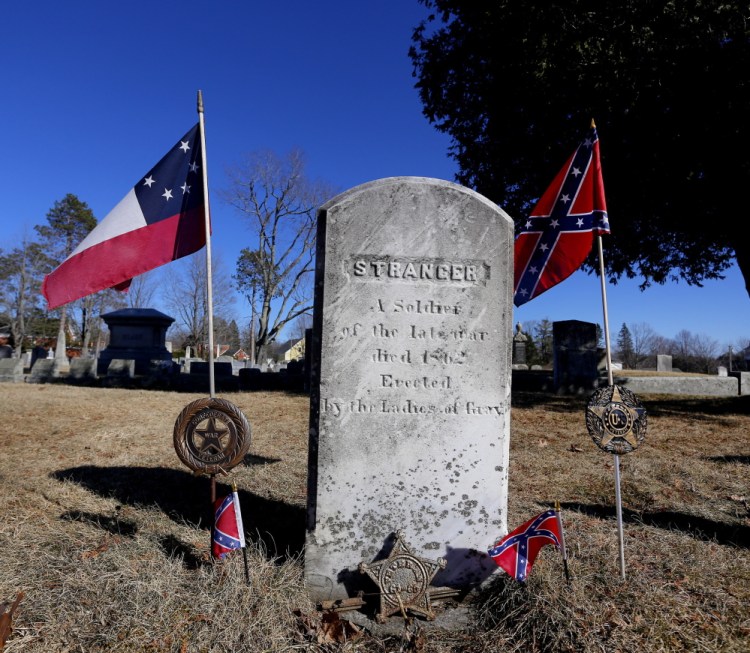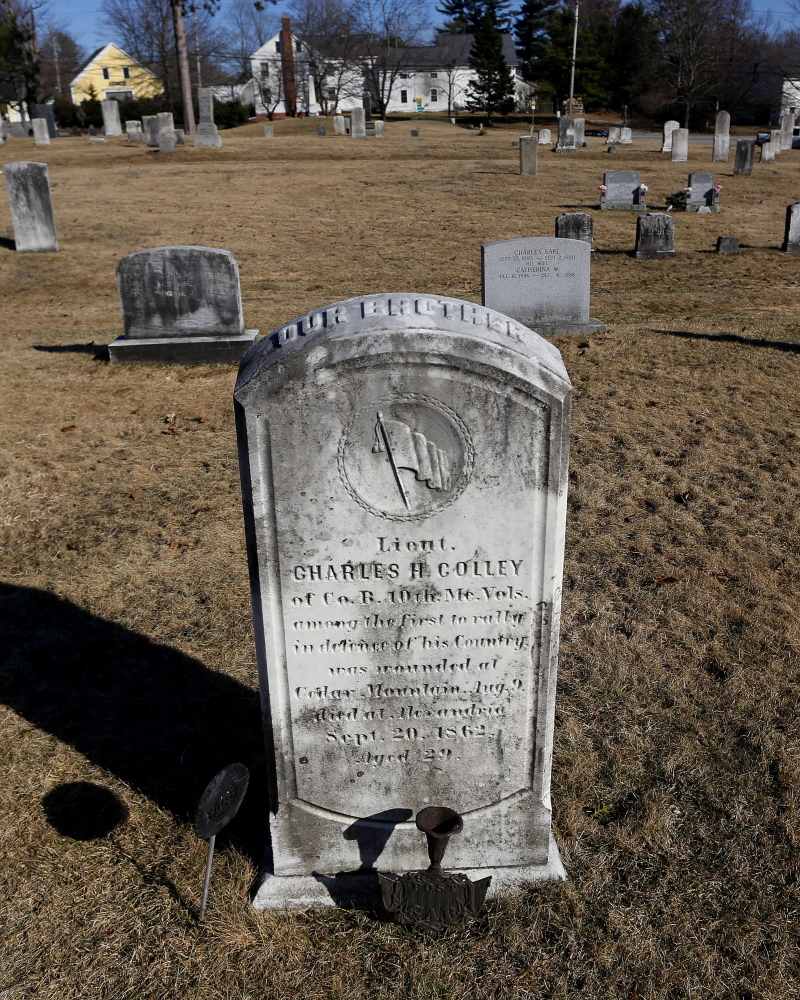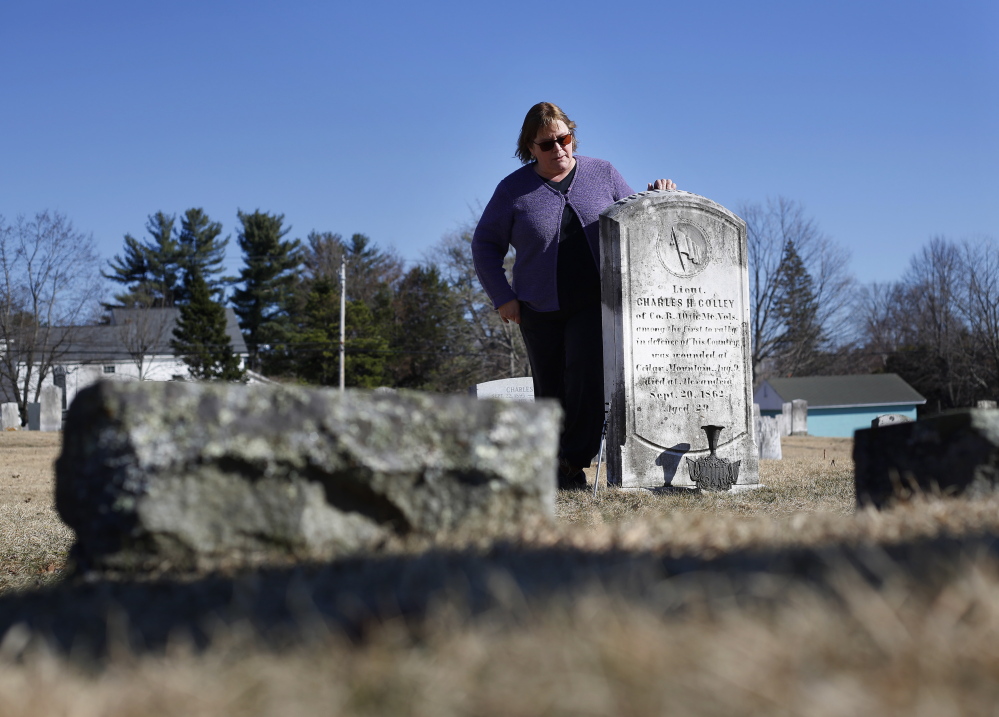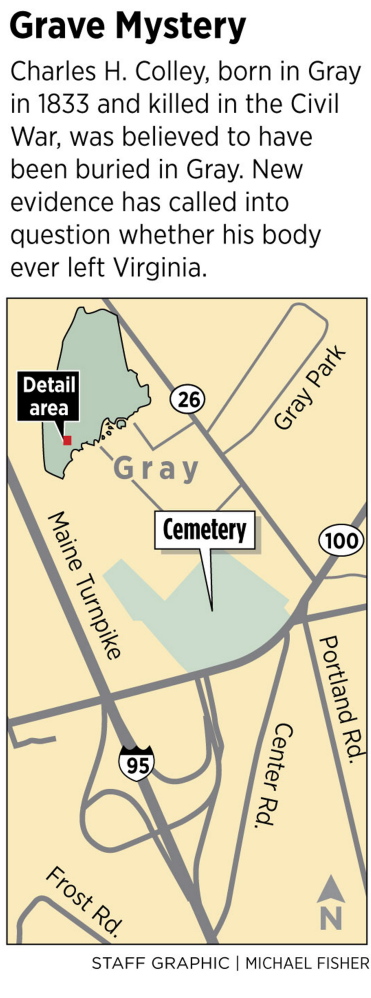The facts of Lt. Charles H. Colley’s life and death have never been in dispute. But his earthly remains, 152 years later, are still a matter of mystery today.
For generations, people in Gray repeated the story of the 29-year-old Union officer from Gray who fell mortally wounded on a Civil War battlefield in Virginia.
His body was supposed to have been shipped home for burial in Maine soil. But instead of containing Colley’s remains, the coffin that arrived in Gray in 1862 held the body of an unknown man dressed in a Confederate uniform.
With no identification, the unknown soldier was buried in Gray’s cemetery, a rebel planted deep in enemy territory beneath a headstone chiseled with the word “STRANGER.” The mystery grave also is marked by a small Confederate flag, a gesture first requested in the 1950s by a Georgia resident who heard the story.
After the mix-up, Colley’s body was supposedly identified and returned to Gray and interred in the same graveyard only 100 feet from the unknown Confederate soldier. His grave is one of dozens that mark the remains of Union soldiers from the town killed in action, and the story of Colley’s burial has been retold for generations.
“The story that I learned growing up was that his body was eventually returned to Gray,” said Mark Faunce of Limington, who grew up in Gray and is Colley’s second cousin four times removed.
Now, however, new evidence casts doubt on whether Colley’s body ever made it back to his hometown, and raises the possibility that there may actually be two mystery graves in Gray.
Colley enlisted in Company B, Maine 10th Infantry Regiment on Oct. 4, 1861. His headstone in Gray says he was “among the first to rally in defense of his country.”
The young Mainer was at the battle of Cedar Mountain in Virginia on Sept. 9, 1862, when he was wounded, shot through the knee. According to a historical account, Colley and other wounded soldiers able to travel were likely transported by train about 60 miles to a hospital in Alexandria. He survived for 11 days, dying on Sept. 20.
It’s the rest of his story that is now less clear.
Faunce uncovered the new evidence in recent months after seeing a photo of Colley’s grave on Facebook and deciding to do some family research. Debi Curry, a Gray town employee who is also a genealogy buff, posted the photo in September along with other pictures taken during a historical guided tour of the cemetery.
The now-defunct U.S. War Department, which kept records of deaths and burials at the time, has digitized tens of thousands of records. When Faunce searched for his long-dead relative, what he found surprised him.
Yellowed from age but clearly legible, there was a record of Colley’s burial at the Alexandria National Cemetery – along with a picture of a headstone planted there. Records show that the cemetery had reserved graves for soldiers, and they indicate that Colley has rested there since the day he died.
The new twist piqued the interest of Curry, the town employee.
“It got me really curious about what the real story was,” Curry said. She began to communicate with the cemetery in Alexandria in an effort to clear up the discrepancy.
Three times, cemetery officials have searched for evidence that Colley was disinterred to be sent home to Gray. And three times, they found none, Curry said, leading her to believe that he remains in Virginia. Curry posted an update about the Colley grave mystery on the town’s website last week.
So who is buried in Colley’s grave in Gray?
Without further information, what truly happened may never be known.
Perhaps, Curry said, Colley’s body was never checked again when the second casket arrived home for his burial. Or, maybe the local headstone was erected as a memorial to the soldier who never came home, and the story morphed over the years to include a burial that never happened.
Of course, the headstone in Virginia could also mark an empty grave, Faunce said.
“One of them is wrong,” Faunce said.
Send questions/comments to the editors.







Comments are no longer available on this story